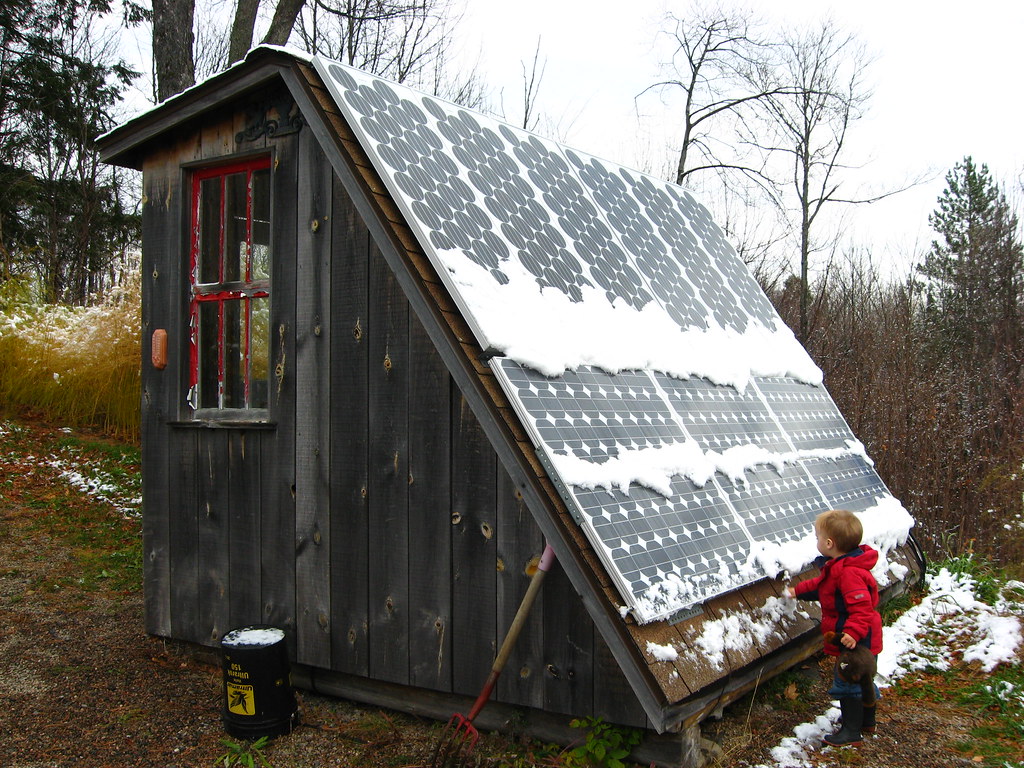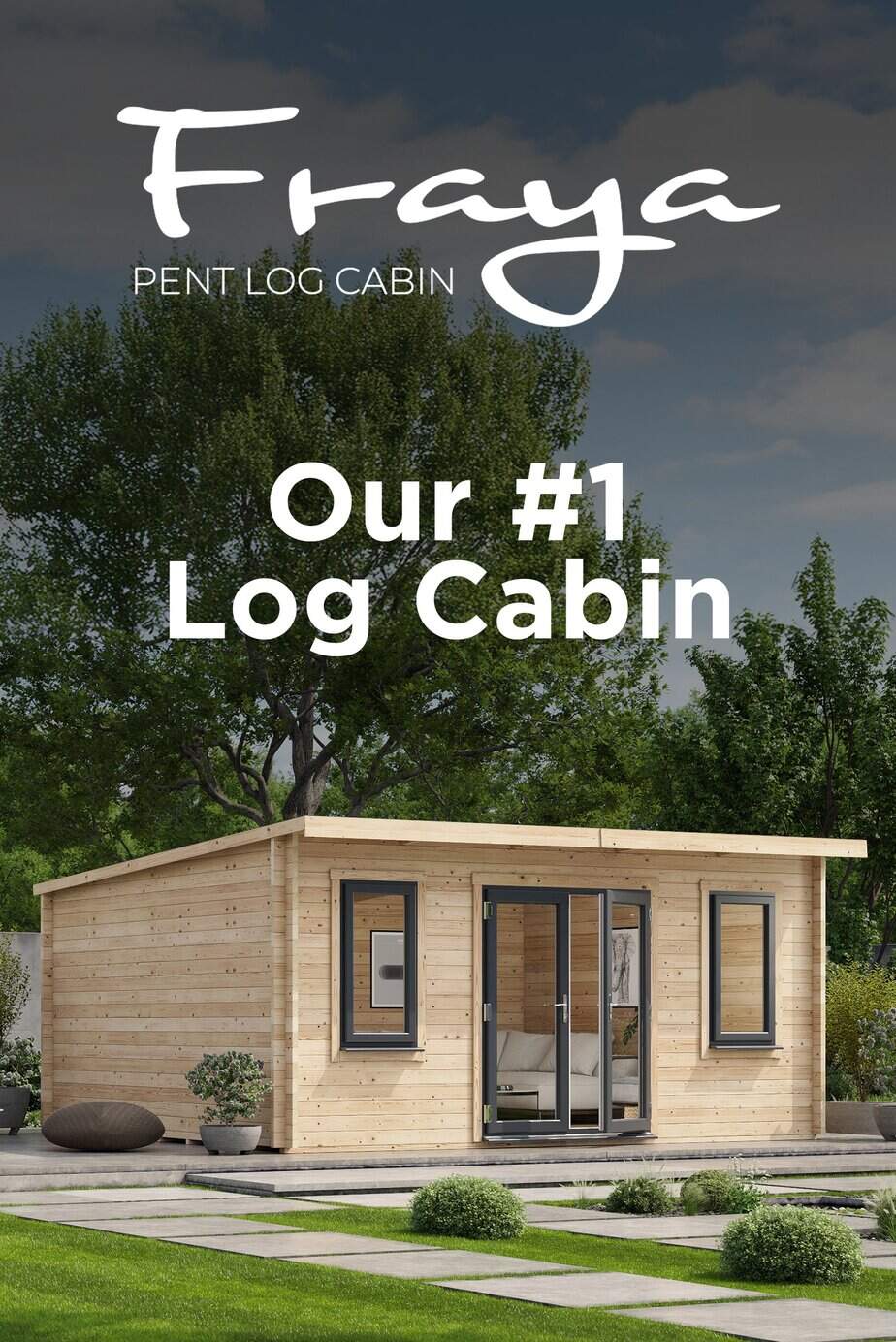Running electricity to your shed isn’t always simple or cheap. So, instead of wiring it to the house, you can go off-grid. Solar is the way most people do it, and once it’s set up, you won’t need to rely on the mains at all. Here’s how to get started.
Off Grid Power for Shed Essentials

Image Credit: Jeremy Levine / flickr
You don’t need a huge system to get started, as long as you have these:
- Solar panels: Go for 100W or more if you plan to run multiple items. You can always add more later.
- Charge controller: MPPT types are more efficient if you’re using more than one panel.
- Deep-cycle batteries: 12V AGM or lithium batteries are a good choice. Aim for enough capacity to last through cloudy days.
- Inverter: A pure sine wave inverter is best if you’re powering sensitive devices like laptops or TVs.
- Cables, fuses, and connectors: Use outdoor-rated cables and parts. Always add fuses to protect your system.
Figure Out What You’ll be Powering

List every item you’ll be using in the shed—like lights, a small heater, a drill, or a mini appliance, even. Check the wattage of each item to know how much power it needs to run. You can find this on the plug, the label underneath, or in the manual. Add everything up to get your total power requirement.
It’s also worth building in a safety buffer, as some devices use more power when they first switch on. Add 20–50% to your total to cover these spikes and give your system a bit of breathing room. This will help you choose the right size for your solar panel, battery, and inverter setup.
If you’re only running a few low-wattage items, a small solar kit may be enough. But if you plan to use power tools, heating, or anything high-demand, you’ll need to size up. Better to overestimate now than run short later.
Finalise Your Solar Panel Setup
A shed with good daylight, especially direct sun, is ideal for solar. A single 100–200W panel covers basics like lighting, charging, or running a laptop. For heavier use, such as powering a fridge, heater, or tools, go for a larger setup or add extra panels to match the demand.
Other options like petrol generators or wind turbines exist. But they’re usually more hassle than they’re worth for small garden sheds. Unless you need backup power or live in a very windy area, stick with solar. Petrol generators also should not be used indoors due to the risk of carbon monoxide.
A shed with a strong, well-built roof is ideal for mounting solar panels — shop our shed range for options designed to handle the great British weather.
How to Install Off-Grid Solar Power for Shed
- Mount your solar panels where they’ll get the most daylight. This could be the shed roof, but a nearby wall or ground frame can work too. A south-facing orientation is ideal, with a tilt of 30 to 40 degrees for optimal performance.
- Run cables from the panels to your charge controller. The controller should be placed in a dry and accessible place inside the shed.
- Connect the charge controller to your deep-cycle battery or battery bank. Batteries should be stored in a cool, well-ventilated space. Sealed ones are your best bet.
- From the battery, run cables to your inverter. The inverter converts stored DC power into AC so you can use standard plug-in devices. Keep cable runs short to minimise power loss, and use the correct gauge cable for your system.
- Install fuses or circuit breakers between each major component. Panels → controller → battery → inverter. These are essential for safety and can prevent damage in case of a fault.
- After everything is connected, test the system before plugging anything in. Make sure the battery charges, the inverter runs, and all connections are secure.
You don’t need to be an expert to install a small off-grid system. Even so, we recommend always following instructions and taking safety seriously. If anything is unclear or involves mains wiring, speak to a qualified electrician.
FAQ
Is it legal to have solar panels on a shed roof in the UK?
Yes, it’s legal. You can install solar panels on a shed roof in the UK without planning permission. This is provided the setup meets basic size and placement rules.
How many solar panels do I need to power a shed?
It depends on what you’re powering. For lights and charging, one 100 to 200W panel is often enough. To run a heater, fridge, or power tools, aim for at least 300 to 500W total, which may mean using two or more panels.
Can I run a shed off-grid all year round in the UK?
Yes, but expect lower output in winter. Use extra panels, larger batteries, or a backup power source to cover low sunlight in winter.

